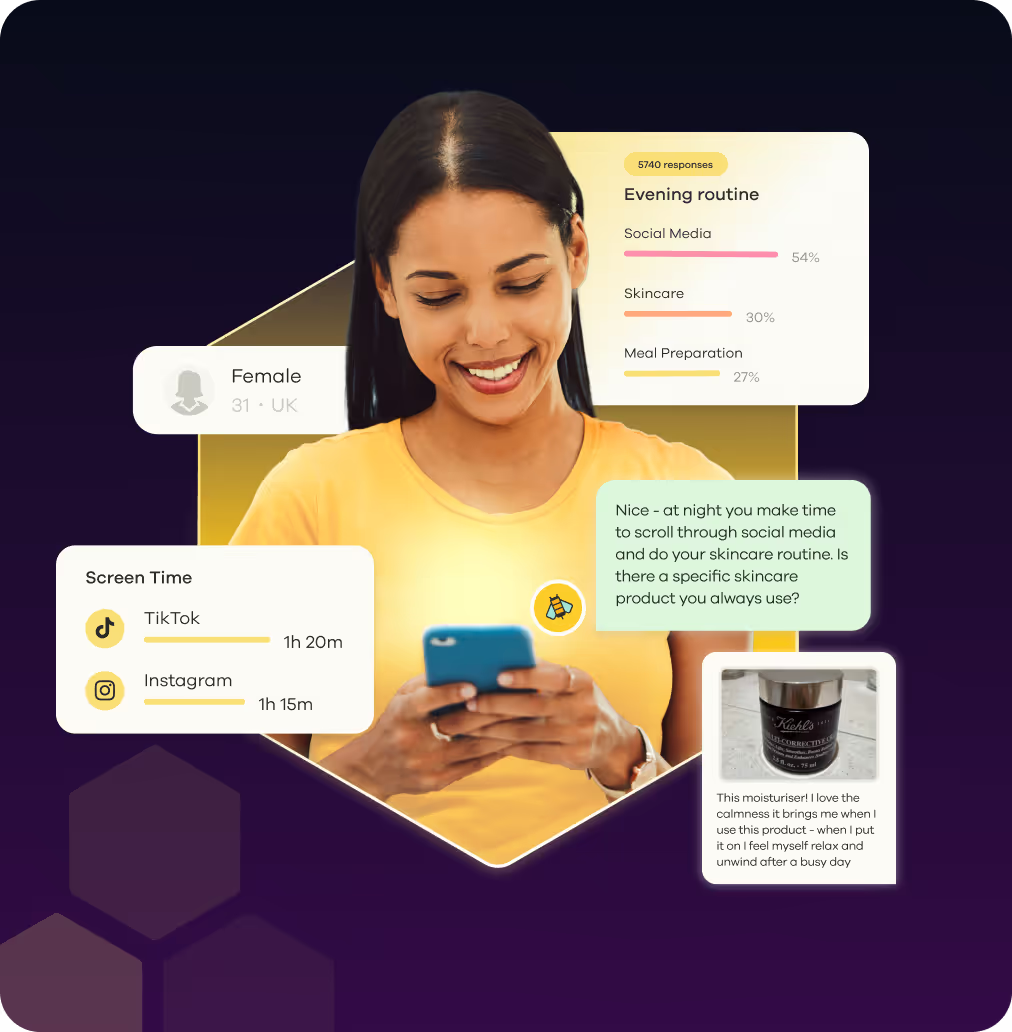Taxonomies, the structured systems that classify and retrieve data, have been integral to information management for centuries. From the early days of organising libraries to the modern era of digital data, taxonomies have evolved significantly. At Streetbees, we leverage advanced taxonomies to transform qualitative conversations into quantifiable insights. (Read more on taxonomies in our recent blog.)
To get a view of the past, present and possible when it comes to taxonomies in insights, we spoke to Daisy Morrison, our Product Taxonomies Manager here at Streetbees and in-house expert.
The past:
Historically, taxonomies were simple yet effective systems used to categorise and retrieve information. Libraries are a prime example, where books were organised by subject, author, and title, enabling users to find the information they needed quickly. These early taxonomies were hierarchical, with clear parent-child relationships.
Daisy explains, “Taxonomies have always been about organising information in a way that makes it easy to find and use. In the early days, this meant creating simple hierarchies that everyone could understand.”
The present:
With the advent of the digital age, taxonomies became more sophisticated. The explosion of online content required more complex systems to manage and retrieve data efficiently. Search engines like Google began using advanced taxonomies to categorise and rank web pages, helping users find relevant information amidst the vast sea of the internet.
At Streetbees, we use taxonomies to transform rich qualitative conversations into actionable insights. Our taxonomies are crafted to be mutually exclusive (no overlapping terms or duplications) and collectively exhaustive (covering every conceivable data point).
Daisy emphasises, “A good taxonomy is essential for ensuring that our data is both accurate and actionable. By having mutually exclusive and collectively exhaustive labels, we can guarantee that we’re capturing all relevant information without any overlap or ambiguity.”
Current applications of taxonomies
Today, taxonomies underpin many of the technologies and services we rely on daily. From helping us find eggs in the supermarket to receiving bespoke Netflix recommendations, taxonomies are everywhere. At Streetbees, our taxonomies are unique to each research use case, providing bespoke insights that are crucial for our clients.
“We know bespoke insights are important, so our taxonomies are unique to each research use case,” says Daisy. “We’re also building flexibility into our product, with an end goal of enabling clients to have the final say in how their data is labelled, helping them cut their data in the most useful way for their business.”
The possible:
As we look to the future, taxonomies will continue to evolve, driven by advances in technology and the increasing complexity of data. Here are a few key trends we anticipate:
- Automation & AI: Over the years, the development of taxonomies has shifted towards automation and seamless integration. This advancement has allowed for the creation of end-to-end products that streamline the process of data classification and retrieval, making it more efficient and accurate. AI and machine learning will play a significant role when it comes to automating the creation and maintenance of taxonomies, making them more dynamic and adaptive.
- Real-Time Updates: The speed at which data is generated today necessitates real-time updates to taxonomies. Future systems will be able to adapt quickly to new information, ensuring that data categorisation remains accurate and up-to-date.
- Bespoke Insights & Personalisation: The demand for customised insights has become increasingly important. Taxonomies are now being tailored to meet the unique needs of each research use case, ensuring that the insights derived are highly relevant and actionable for specific business contexts. As data becomes more personalised, so too will taxonomies. Future systems will be able to tailor taxonomies to individual users or specific business needs, enhancing the relevance and usefulness of the data.
- Client Control and Flexibility: There is a growing trend towards giving clients more control and flexibility in how their data is labelled and categorised. This approach enables businesses to structure their data in ways that are most useful for their specific needs, enhancing the overall utility and effectiveness of the insights generated.
Taxonomies have come a long way from their humble beginnings in libraries. Today, they are a crucial function for managing the vast amounts of data generated in our digital world. As we move into the future, taxonomies will continue to evolve, becoming more integrated, intelligent, and personalised. At Streetbees, we’re excited to be part of this journey, helping our clients unlock the full potential of their data.
About Daisy

Daisy Morrison is Streetbees' Product Taxonomy Manager. After joining the Operations Team in 2018, she transitioned through roles in Field and Processing to eventually take on Taxonomy, founding the team and growing them alongside our expanding list of clients and categories. With the transition to an AI-led product, she now works on ensuring our SBX product is grounded in best-in-class taxonomy practices, building tools and features that support optimum data classification.





